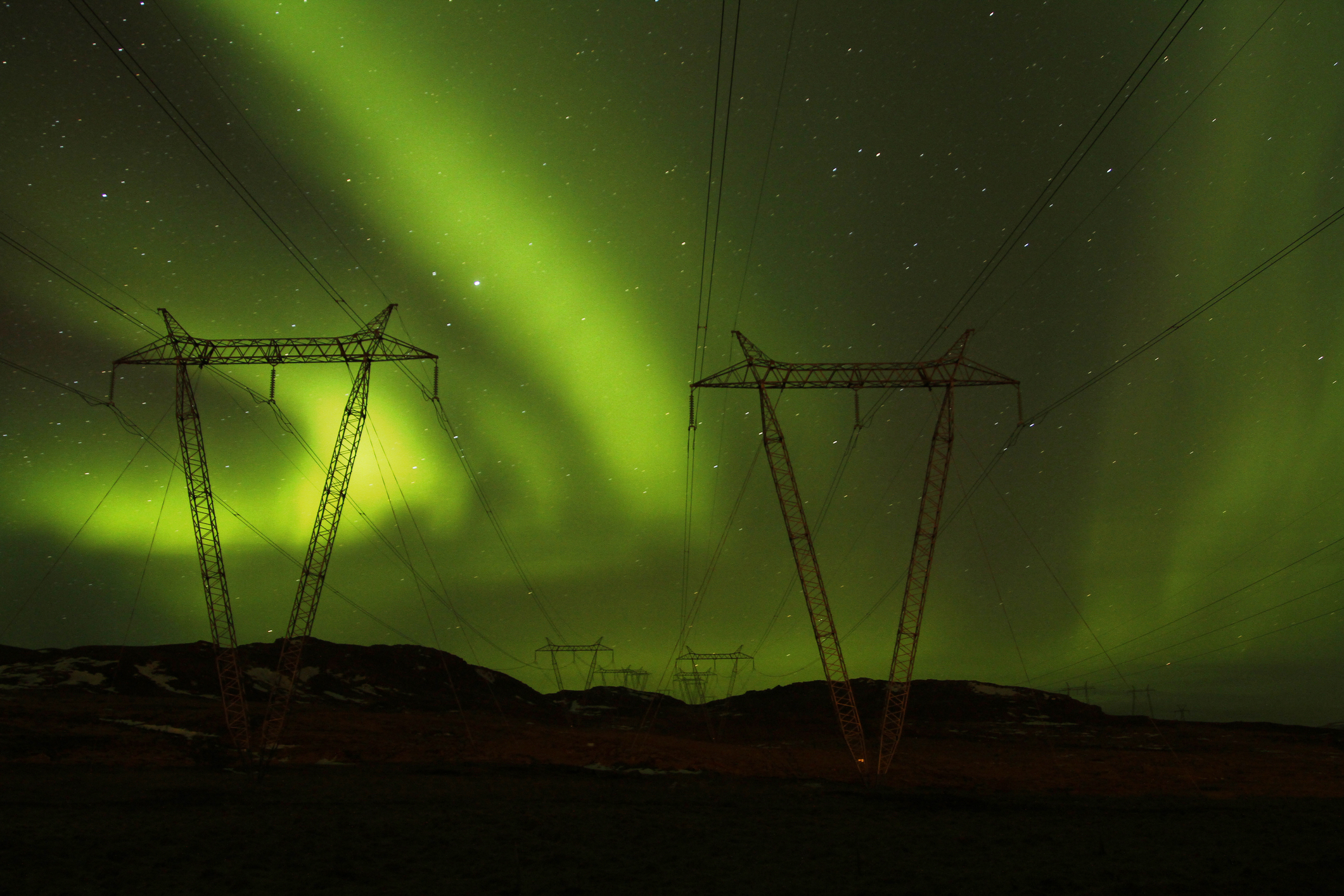By Josh Hartman - Spring 2016
Magnetic storms, triggered by the interaction of the solar wind with Earth’s magnetosphere, not only produce our aurora light shows, but can also induce electric fields in our planet’s subsurface. Although usually small, magnetic storms can sometimes be large enough to create aurora as far south as Cuba or Honolulu. Such large storms can cripple a power grid by inducing unregulated electric currents into the power system.
Recently, two scientists from very different fields joined forces to begin tackling the problem of geomagnetically induced currents by mapping their distribution through Earth after simple magnetic storms. Paul Bedrosian, a solid-earth geophysicist, and Jeffery Love, a space-weather physicist, are using magnetotelluric (MT) data from the EarthScope USArray program to study how Earth’s variable conductivity structure impacts the electric fields generated during magnetic storms. In the process, they have highlighted the simplicities and inaccuracies of the more commonly assumed layercake conductivity structure.
“Geomagnetic storms are infrequent,” Bedrosian says, “but an extreme storm is a high-risk event and a blackout on a regional scale would be quite deleterious. This research is trying to use information about the solid earth to effectively map out areas that are more or less vulnerable to such a magnetic storm.”
“We both understood that the electric power grid industry was interested in predicting these geoelectric fields and we both understood that the EarthScope magnetotelluric data recorded the relationship between magnetic activity and geoelectric activity,” Love says. “The hazard at Earth’s surface that is caused by space weather is utterly and absolutely dependent upon the nature of the solid earth beneath our feet,” he adds.
To study induced electric fields, Bedrosian used a part of the publicly available magnetotelluric dataset collected by USArray, currently consisting of more than 700 stations covering nearly half of the contiguous U.S. at a spacing of ~70 km. “Taking a data set with a very academic purpose and coming up with results applicable to a totally different field is of great importance from a hazard perspective,” Bedrosian says. “It’s a bit of addon science which we’ve managed to do with the excellent public data resource provided by EarthScope.”
Changes in the electric field are, to a first order, governed by changes in the electrical conductivity of Earth’s subsurface, which, in turn, is governed by variations in rock type. “The more conductive an area, the smaller are the electric fields,” explains Bedrosian.
Treating MT data as the filter through which a simplified magnetic storm can be passed, Bedrosian was able to calculate the magnitude and direction of the electric field. Bedrosian’s and Love’s findings are presented in a recently published paper in the journal Geophysical Research Letters. “This paper is a first step at improving our ability to map out electric field disturbances associated with electric storms,” Bedrosian says. “That information is needed to better assess and mitigate the risk to electric power utilities during magnetic storms.”
Currently, the U.S. Federal Energy Regulatory Commission mandates that electric power utilities assess vulnerabilities and create plans to reduce potential damage from geoelectric currents. These strategies are expensive and time-intensive because they cast a large net and don’t necessarily target the places that would be hit by a real event.
The team plans to examine data from more complex—in other words, more realistic—magnetic storms, as well as expanding their analysis to USArray data from the northwestern U.S. They hope to eventually have data for the entire country, and, adds Bedrosian, “Further into the future we’d like to have sort of a nowcast,” a system for fast data input to calculate the electric field in an area within a few hours of a magnetic storm.





